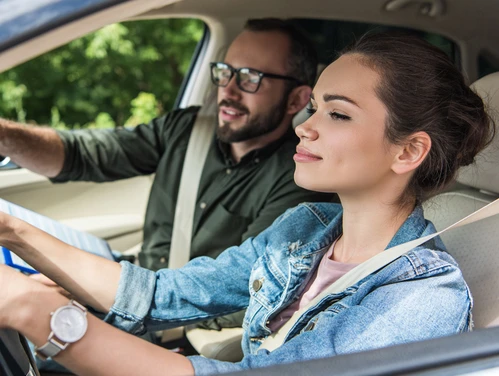It is our goal that those who can safely drive are able to for as long as possible. Please use the information below to determine if you need a drive test and how to prepare for one if you do.
Who is Required to Take a Drive Test?
Drivers under age 18 if ANY of the following apply:
- Your driver’s education instructor requested that you complete a drive test before receiving your license.
- You have a medical condition that may affect your ability to safely operate a vehicle. Does not include the need for contacts/glasses.
- You currently have specific restrictions on your Iowa driver’s license which require a driving test to be removed.
- You were ordered by a court to comply with a driving test.
- You completed driver education through the Iowa DOT’s parent taught driver’s education program.
For drivers under age 18, Iowa has a Graduated Driver’s Licensing (GDL) program.
Drivers age 18 or older if ANY of the following apply:
- You have never been licensed in any U.S. state or territory.
- You are licensed in another state, but your license has been expired or invalid for one year or longer.
- You are licensed or have been licensed in Iowa, but your license has been expired or invalid for one year or longer.
- You have a medical condition that may affect your ability to safely operate a vehicle. Does not include the need for contacts/glasses.
- You currently have specific restrictions on your Iowa driver’s license which require a driving test to be removed.
- You were ordered by a court to comply with a driving test.
- You contributed to a certain type of motor vehicle crash indicating the need for a re-examination of your driving abilities.
A drive test is not required for renewals or for anyone over age 18 surrendering a valid driver license from another state; however, the Iowa DOT may require a drive test at any time.
After reviewing the information above, do you need to take a drive test? Schedule your drive test
Preparing for your Drive Test
Prepare Your Vehicle
Before you begin the drive test, the vehicle you bring must pass an inspection to ensure it is safe and can be legally operated on public roadways. The customer service representative will check for:
- Two license plates permanently affixed to the front and back of the vehicle. Single out-of-state or temporary plates will be accepted.
- A properly functioning horn
- Functioning turn signals on the front and back of the vehicle
- Unexpired vehicle registration
- Unexpired insurance
- At least one rearview mirror inside or outside of the vehicle
- Driver and front passenger door must open normally
- Functioning seatbelts
- Brake lights
- Functioning windshield wipers, headlights, and taillights, depending on weather conditions and time of day
Review Study Materials
Practice
When you practice, pretend you are taking a driving test. Ask your accompanying driver to point out your mistakes. Ask questions about certain driving situations that may have confused you to correct your mistakes. Please note: You need an instruction permit to practice driving.
What to Expect During the Drive Test
The drive examiner is there to ensure you have demonstrated that you can handle your vehicle in regular traffic situations, not to trick you. During your driving test, the examiner will note how you obey the rules of the road and traffic signs and/or signals. They will note other areas in which you may need to improve upon. Practice the following during your drive test and any time you’re behind the wheel.
- Always drive defensively. Try to anticipate errors another driver might make.
- Be aware of your surroundings. Check your mirrors, look both ways at intersections, and look over the proper shoulder before making a lane change or merging with traffic.
- Steer smoothly and avoid sudden turns.
- Accelerate and stop smoothly. Slow down or speed up gradually to avoid sudden jerks.
- Be aware of where you must stop when approaching an intersection. If your view is blocked, stop then move forward carefully. Look both ways before continuing into the intersection. Do not roll through stop signs or red lights.
- Always obey posted speed limits. When poor weather, road, or traffic conditions are present, reduce speed accordingly.
- Use the two-second rule to ensure you are following at a safe distance. Increase the following distance for poor weather, road, or traffic conditions.
- Know what all traffic signs and signals mean and obey them.
- Use the correct lane. Signal and turn from the improper lane into the proper lane.
- Put your signal on 100 feet before turning or changing lanes.
A common concern we hear is, “Will I have to parallel park?” No. Although a useful skill to master, we currently do not require parallel parking as part of the drive test.
